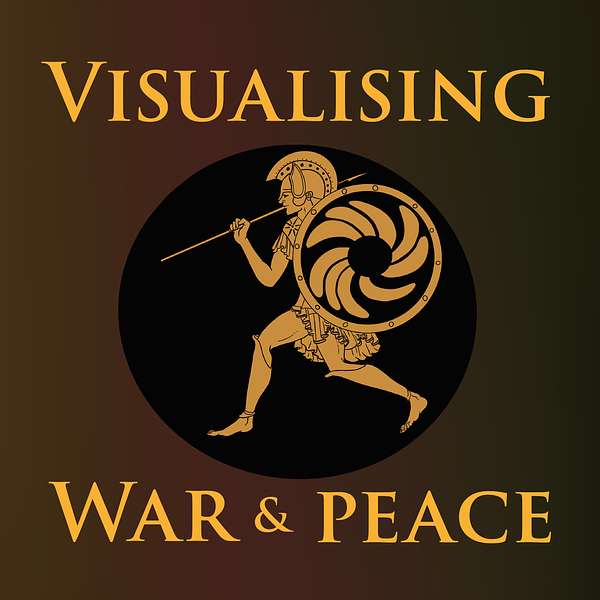
Visualising War and Peace
How do war stories work? And what do they do to us? Join University of St Andrews historian Alice König and colleagues as they explore how war and peace get presented in art, text, film and music. With the help of expert guests, they unpick conflict stories from all sorts of different periods and places. And they ask how the tales we tell and the pictures we paint of peace and war influence us as individuals and shape the societies we live in.
Visualising War and Peace
Visualising Forced Migration through history
This episode kicks off a new series of podcasts exploring how we visualise forced displacement, one of the many legacies of war. Alice interviews artist Diana Forster about her new art installation, 'Somewhere to Stay', which narrates the story of her mother's forced migration from Poland to Scotland during WWII. Fellow guest Josef Butler (a PhD student at King's College, London) draws on his research into the Polish exile community in Britain from 1940-1971 to provide important context for Diana's family story. Together, they help us to reflect on the power of artistic and historical narratives of forced migration to deepen understanding of contemporary experiences of displacement and to disarm the toxicity of current political debates around the so-called 'refugee crisis'.
During the episode, Diana discusses her mother's experience of being deported from her home in eastern Poland (now Ukraine) to a labour camp in Soviet Russia in 1940, and of her arduous journey from there to Uzbekistan, Iran, Tanzania and (eventually) Britain, where her family finally settled. She also talks us through the artwork she has created to help us visualise that journey: in particular, ten laser-cut aluminium panels which depict the different forms of shelter which her mother found herself living in, from wood barracks in the Siberian gulag to army tents, stables, mud rondavels and Nissen huts. As she explains, her art has been inspired the old Polish paper-cutting craft of wycinanki, which allows her to create works that cast shadows, evoking the long shadow of war. Her new art installation, 'Somewhere to Stay', was co-commissioned by the Visualising War and Peace project and the IWM 14-18 NOW Legacy Fund, and is on display at Kirkcaldy Galleries (4th Feb-14th May 2023) and St Andrews' Wardlaw Museum (25th May-30th November).
Josef helps us understand Diana's family story in the context of a wide range of Polish displacements triggered by World War II. He underlines the diversity of journeys taken by Polish refugees from east and west, and helps us picture the scale of these population movements, which traversed many different countries across multiple continents. He reflects particularly on the role played by British (former) colonies not only in providing temporary accommodation and resources to Polish refugees but also in shaping their ideas of Britain and British identity. This leads to some fascinating discussion of identity-formation amongst Polish communities in exile. Josef warns against 'flattening' narratives that homogenise Polish identity and experience, and talks us through the various ways in which Polish refugees were encouraged to integrate with the local population - while sometimes being barred from doing so. He sets this historic forced migration against the backdrop of wider post-war rebuilding and mass migrations (including Windrush), and reflects on the political labelling (both then and now) of some migrants as 'good' or 'worthy' and others as not. We reflect on the power of Polish exile history (and migration history more generally) to help us visualise the choices, agency and contributions of refugees in positive ways.
You can find out more about Diana's artwork and Polish exile history by visiting our ‘Visualising Forced Migration’ website. As we explain there, we want the story of this historic forced migration, from 80 years ago, to help us generate more compassionate conversation about how we grasp and represent the different forms of rupture, journeying and home-making which forced migrants have to deal with on a daily basis, all around the world.
Our theme music was composed by Jonathan Young.
The show was mixed by Zofia Guertin.